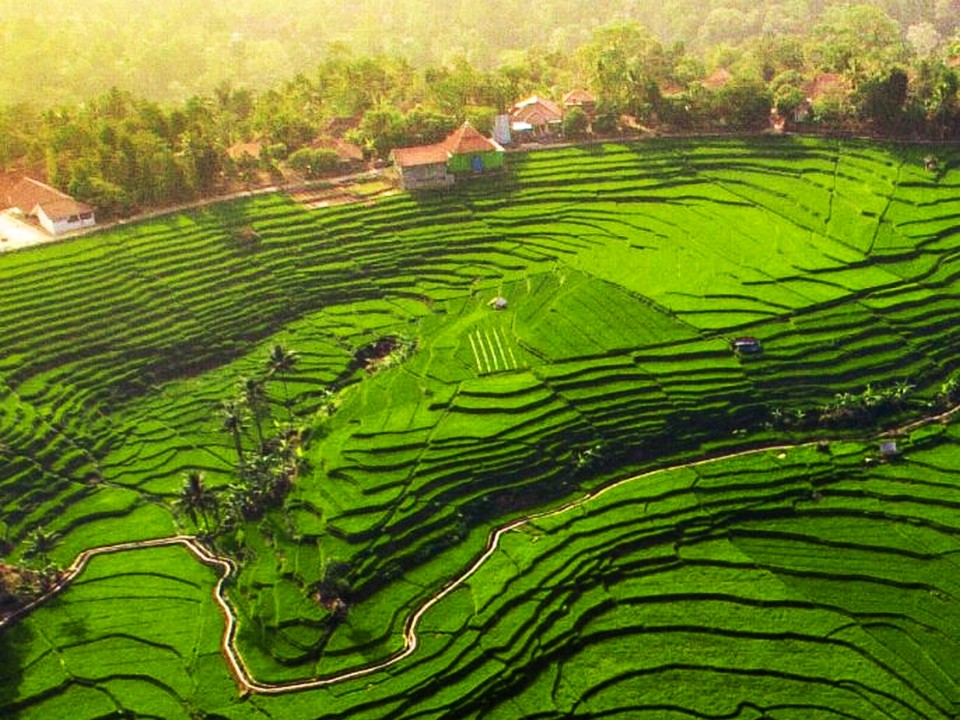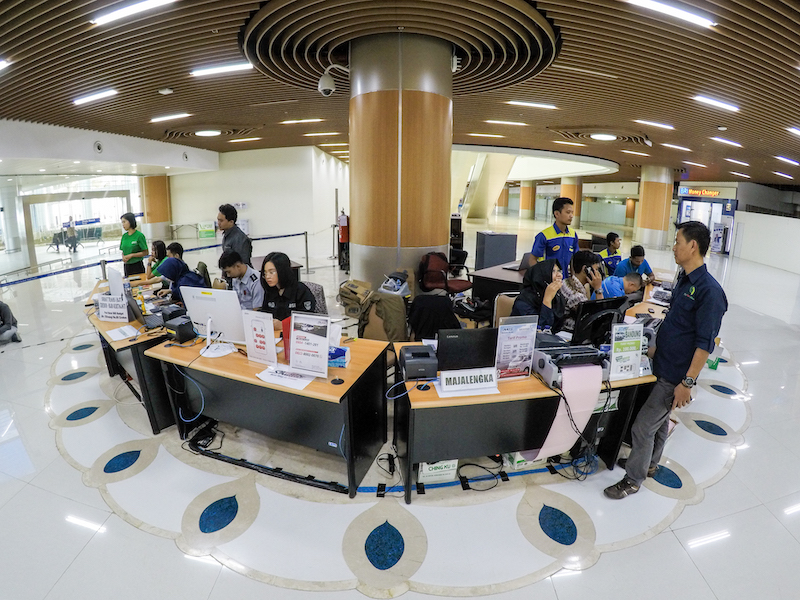One of the natural attractions that are synonymous with the city of Bandung is Tangkuban Perahu Mountain. The origin of this mountain is told in the famous folk legend, the story of Sangkuriang. This mountain has three famous craters. Looking at the mountain crater and enjoying the atmosphere around it can attract many visitors, especially on holidays.
Tangkuban Perahu Mountain or also often called Tangkuban Parahu is one of the biggest mountains in the Parahyangan plain. Tangkuban Perahu Volcano Nature Park is located north of the city of Lembang, north of the city of Bandung. Cool air, expanse of tea gardens, valleys and tall pine trees accompany your journey to the gate of the Tangkuban Perahu area. To enter Tangkuban Perahu area, you have to pay a ticket of Rp. 13,000 per person plus a ticket for the vehicle.
There are two paths to the craters on this mountain. The first road or the old road with road conditions that are more difficult to pass and will usually be closed after rain or when it feels dangerous to pass. The ticket window guard will give directions to take the new road that is further up if the road is closed. Before the payment ticket on this first street, there were lodges for rent for lodging.
Passing a new road, a paved road makes it easy for your vehicle to travel. On the side of the winding road there are trumpet flowers and other trees that will cool your journey. In the Tangkuban Perahu mountain area there are three interesting craters to visit. The craters are Domas Crater, Ratu Crater and Upas Crater. The biggest crater among the three and the most visited is Kawah Ratu. With a few hours walk, you can even go around the vast Crater of the Queen while enjoying the panoramic beauty of Mount Tangkuban Perahu.
Queen Crater
If you arrive by bus, there is a special bus parking space before reaching Kawah Ratu. The journey continues with an ELF car that will take you to Kawah Ratu. However, if you use a private vehicle, you can continue to use it up to Kawah Ratu. Vehicle parking is available opposite this crater, so without going through difficult terrain and consuming a lot of energy, you can see this crater. Maybe this is also one of the reasons, most visitors are in this crater.
Kawah Ratu is directly visible from above with a wooden fence to prevent visitors from falling. Seeing the depth of the crater, the walls of the crater and smoke that still comes out of this crater creates a thrilling view. The soil around Kawah Ratu is generally white with some yellow sulfur stones. The rocks and the dry and arid atmosphere felt in this crater. You can try to climb to a higher area if you want to see the entire Kawah Ratu area.
In this place a lot of simple shops that sell various souvenirs such as scarves, skullcaps, bags and fur hats, various wooden displays and various other accessories. There are also sellers of food and hot drinks such as boiled noodles, bandrek and others. You can also ride a horse around this part of the crater. This activity is usually liked by children.
Upas Crater
Upas Crater is located next to Kawah Ratu. However, to be able to see this crater must go through dangerous terrain, you must pass through a sandy road to reach this crater. So, very rarely visitors who come to see this crater. The shape of Upas Crater is different from Ratu Crater. Upas Crater is shallower and horizontal.
Domas Crater
Kawah Domas is located lower than Kawah Ratu. If you come through a new road, you will find the gate to Domas Crater first before heading to Kawah Ratu. If in Kawah Ratu you will only see the crater from a distance, in the Domas Crater, you can be closer to the crater. In fact, you can try boiling eggs by putting them in the crater. If you want to see Domas Crater past 16.00 WIB, you are required to use the services of a tour guide.
Manarasa
The trees that are often seen around the crater are trees called by local residents by the name of Manarasa. The leaves of this plant will turn reddish if the leaves are old. Red leaves can be eaten with a taste similar to guava leaves with a slightly sour taste. This leaf can treat diarrhea and is believed to make young. Perhaps this leaf is believed by the surrounding community to be eaten by Dayang Sumbi who is ageless in the legend of the Tangkuban Perahu Mountain.
The legend of Tangkuban Perahu
The essence of the story of the Tangkuban Perahu legend is a young man named Sangkuriang who wants to marry a beautiful woman named Dayang Sumbi. They fall in love with each other. However, after finding a scar on Sangkuriang's head, Dayang Sumbi found out that Sangkuriang was his child. Sangkuriang left because he was upset with his mother's anger. Dayang Sumbi was angry because Sangkuriang killed their beloved dog when it failed to hunt deer for his mother.
Knowing Sangkuriang was his child, Dayang Sumbi did not want to marry Sangkuriang. So, to refuse Sangkuriang's propose, Dayang Sumbi asked to make a boat and the lake in one night. The powerful Sangkuriang asked for help from the Jinn to fulfill Dayang Sumbi's wishes.
Seeing Sangkuriang almost finishing his work, Dayang Sumbi intended to frustrate it. Thanks to her prayers, the chickens crow. The genies who helped Sangkuriang was running scared because he thought it was morning. As a result the work of making boats and lakes is not finished. Sangkuriang who was furious because he failed to finish his work kicked his boat. This boat then fell face down and there was Mount Tangkuban Perahu. When viewed from the city of Bandung, this mountain resembles an overturned boat.
The beauty of the crater from Tangkuban Perahu Mountain and several spots around it also become one of the places for prospective brides to do outdoor prewedding photos. The beauty of the craters from Mount Tangkuban Perahu can be one of the tourist destinations if you are visiting the city of Bandung. You can bring children to see this natural beauty.






